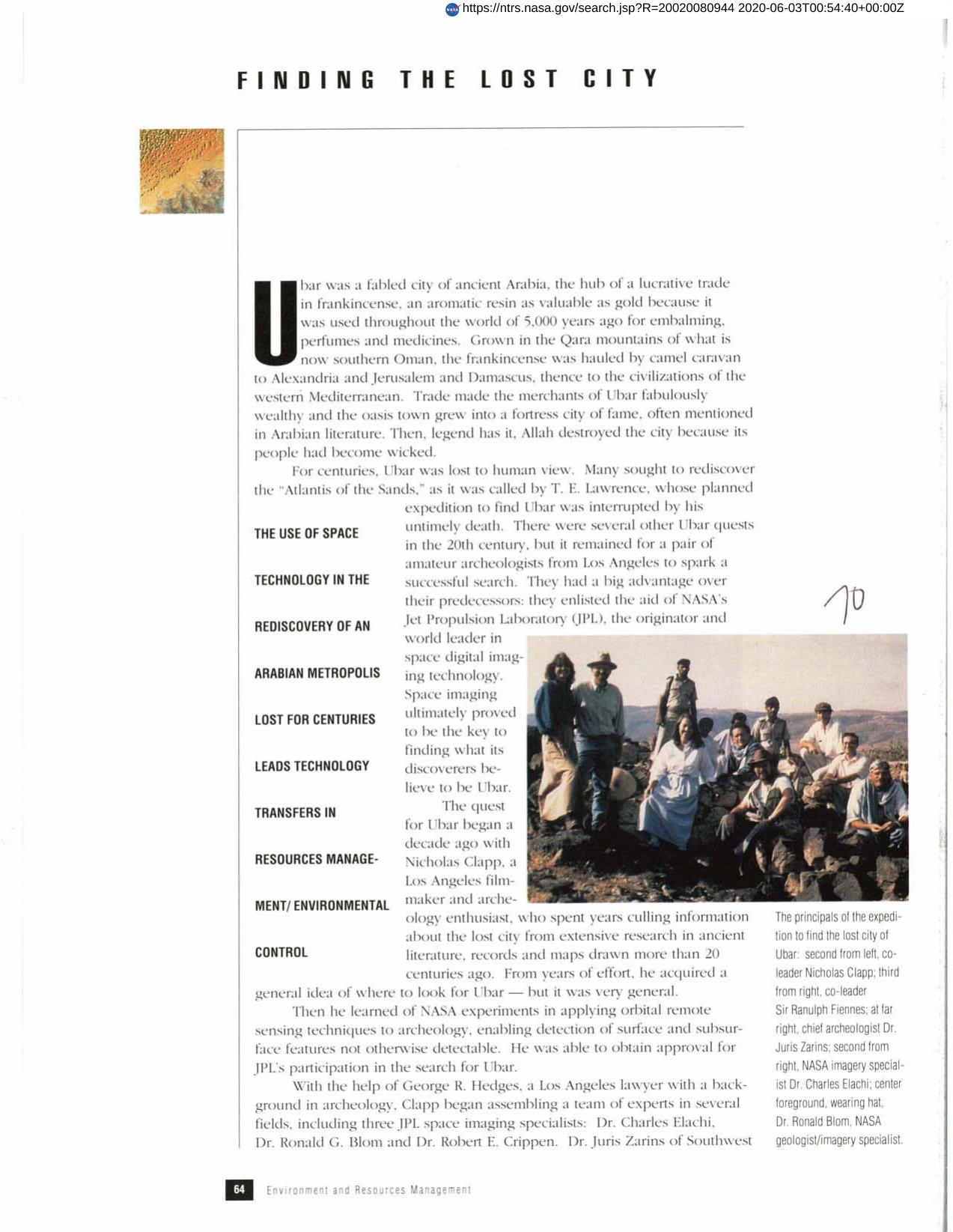
Finding the Lost City
Nicholas Clapp, a filmmaker and archeology enthusiast, had accumulated extensive information concerning Ubar, the fabled lost city of ancient Arabia. When he was unable to identify its exact location, however, he turned to the Jet Propulsion Laboratory (JPL) for assistance in applying orbital remote sensing techniques. JPL scientists searched NASA's shuttle imaging radar, as well as Landsat and SPOT images and discovered ancient caravan tracks. This enabled them to prepare a map of the trails, which converged at a place known as Ash Shisr. An expedition was formed, which found structures and artifacts from a city that predates previous area civilization by a thousand years. Although it will take time to validate the city as Ubar, the discovery is a monumental archeological triumph.
Full article: http://hdl.handle.net/hdl:2060/20020080944

Finding the Lost City

Finding the Lost City













